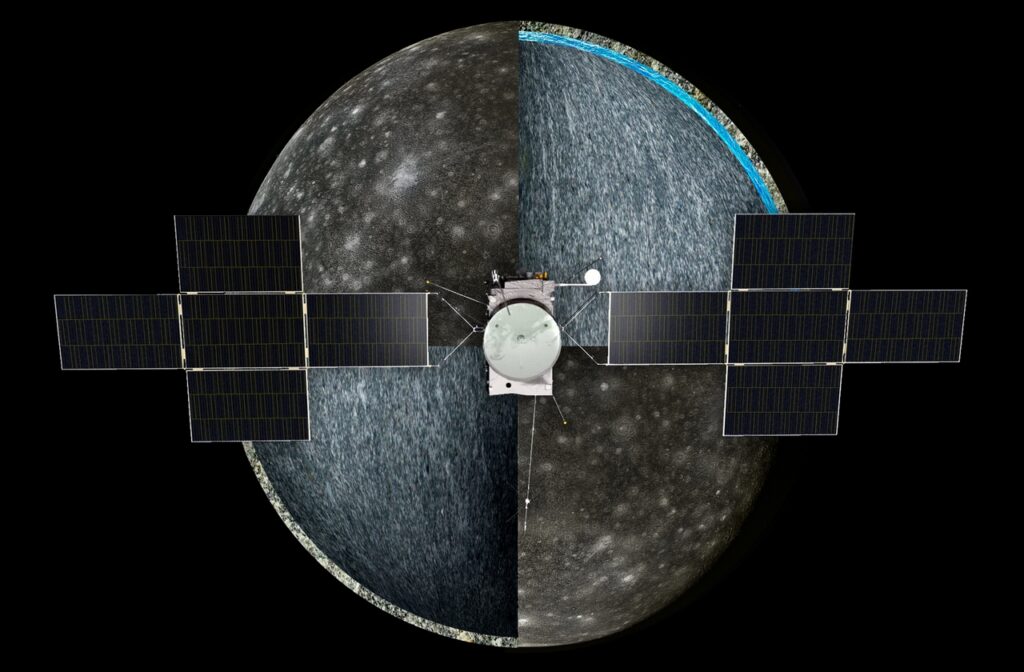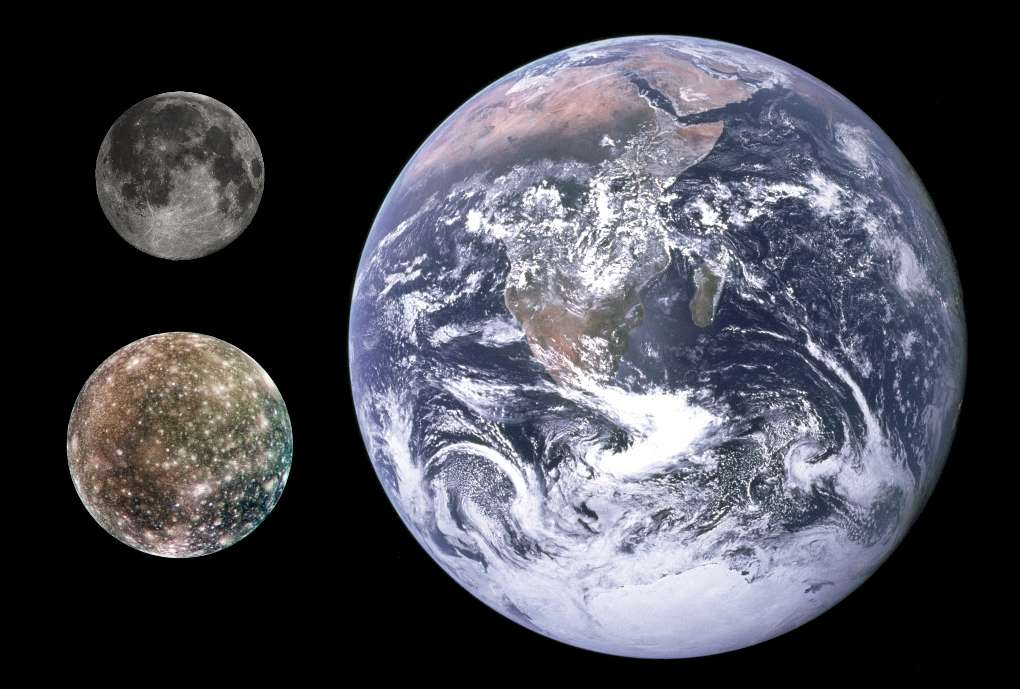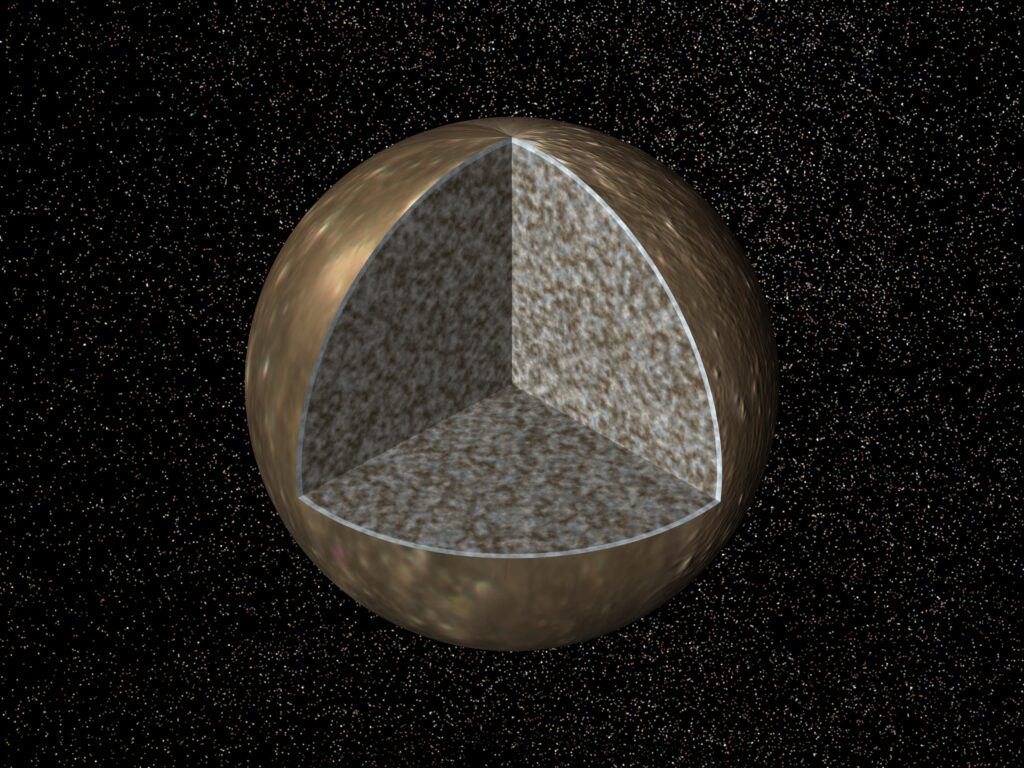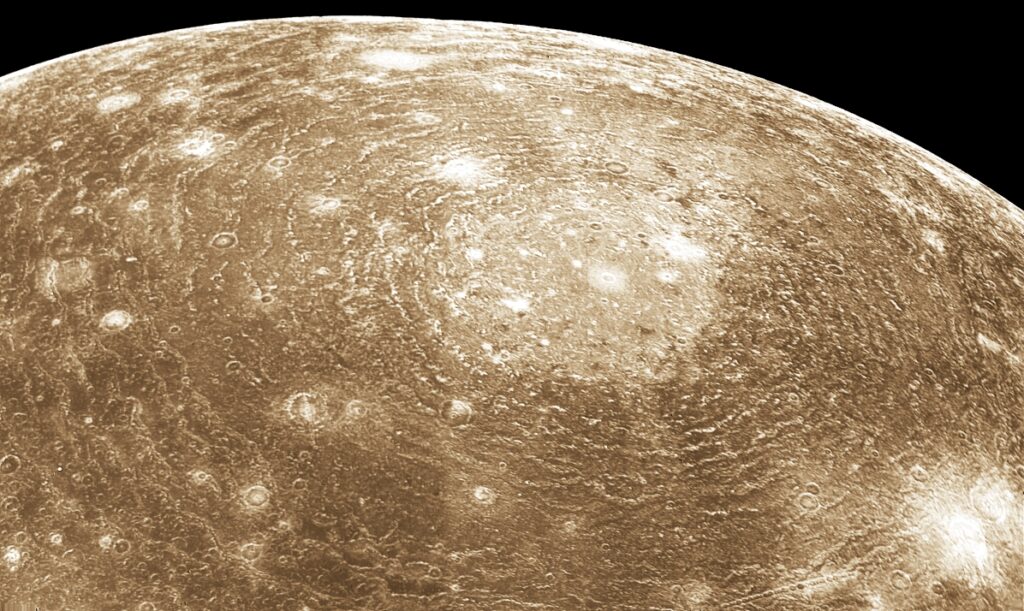The JUICE mission set off on its journey to Jupiter on April 14. When it arrives in the vicinity of the gas giant in the early 2030s and begins to study its system, one of its targets will be the mysterious Callisto, the planet’s second largest moon.

The JUICE mission will explore Callisto
On April 14, the JUICE spacecraft, created by the European Space Agency (ESA), launched from the Kourou Spaceport in French Guiana. It will spend the next few years in space before reaching the Jupiter system in the early 2030s. There it will begin studying the planet’s icy moons.
Two cameras in the visible range, three spectrographs operating in the visible, ultraviolet and microwave spectrum, a laser altimeter, a radar and a gravitational anomaly detector are located on board the device.

We have already told you that the automatic scout will be able to see interesting things on the cracked ice ball of Europa and the largest satellite of the Solar System, Ganymede. Now it’s time to meet the third objective of the JUICE mission — the mysterious Callisto.
The second largest satellite of Jupiter
The mystery of Callisto is mostly that we know very little about it at all. It is the second largest satellite of the giant planet. With an average diameter of 4,821 km, it is the third largest satellite in the Solar System and is only 1% smaller than Mercury. At the same time, it is almost three times lighter than the smallest planet in the Solar System.
The average distance of Callisto from Jupiter is 1.88 million km. That is, this satellite orbits six times farther from the gas giant than the Moon from Earth. Despite this, the tidal forces from the giant planet are so strong that it, like Io, Europa and Ganymede, rotates synchronously: the planet is always visible from one hemisphere of Callisto, and never from the other. A solar day on Callisto lasts 16.7 Earth days, exactly the same as its orbit time around Jupiter.

Meanwhile Callisto does not participate in the orbital resonance, unlike the other three large satellites. Therefore, the period of its rotation around the planet is not a multiple of the periods of Io, Europa or Ganymede.
Internal structure of Callisto
Despite its size, Callisto remains the most mysterious of Jupiter’s large moons. And its main secret is its internal structure. The average density of 1.83 g/cm³ indicates that it is composed of ice and rock in equal measure.
At the same time, among the four largest Jupiter moons, Callisto is the least affected by tidal forces. Therefore, it could not have had a strong heating of its bowels, as well as stratification characteristic of Io, Europa and Ganymede. It can be said that this celestial body shows us what the rest of the large moons of Jupiter were like at the beginning of the evolution of the solar system.
However, studies of Jupiter’s magnetic field show that Callisto interacts with it like a sphere with an electrically conductive layer inside. From this, scientists conclude that there may be an ocean up to 10 km deep in its bowels. And if the water contains ammonia or some organic compounds, its depth can reach 250–300 km.

Anyway, above the surface of Callisto’s hypothetical ocean there must be a 300 km thick crust of a mixture of ice and rock. A radar and a gravimeter are installed on board JUICE, but it is not entirely clear whether they will be enough to find out for sure whether there is a liquid layer under the surface of the satellite and what its parameters are.
If there is an ocean on Callisto, then the extent of its stratification is much greater than previously thought. But it is possible that the researchers were mistaken in the interpretation of previous studies of the magnetic field and in fact there is no ocean there.
The surface of Callisto
Much of Callisto’s exploration by JUICE will be on its surface. On-board spectrographs will try to determine its chemical composition. As for now, tholins (complex polymeric organic compounds) are discovered there. But we don’t know exactly what kind of tholins. The new European mission will be able to find that out.
Callisto’s surface is also interesting because it is the most heavily cratered moon of Jupiter. This is explained by the fact that its surface did not experience the updates that constantly occur on its three “neighbors”.

But it is possible that a small smoothing of the relief details did occur on this satellite. This is suggested by the two largest impact structures on the surface, Valhalla and Asgard. The first of them is a bright spot with a diameter of 600 km, surrounded by ring ridges with a radius of up to 1800 km. So, the diameter of Valgala reaches 3600 km. It is one of the largest impact marks in the solar system.
Asgard is slightly smaller. The maximum diameter of its concentric circles is 1600 km. A characteristic feature of both structures is that their central regions are not craters, but only areas of distinctive color. They are called palimpsests and are also present on Ganymede. Valhalla was formed between 2 and 4 billion years ago, so whatever processes were responsible for its “erasure” occurred during that time.
Finding out what those processes were is one of JUICE’s most important tasks. Studying the “younger” structures that overlie the ancient impact formations will help to determine whether endogenous activity was once observed on Callisto, or whether these structures are of a different nature.

